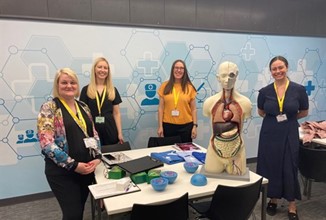Introduction to Story Sacks
- Overview of story sacks: definition and purpose
- Benefits of using story sacks in storytelling
- Introduction to the course and its objectives
- Self-assessment of current storytelling skills
Fundamental Principles of Storytelling
- The importance of storytelling in child development
- Key elements of a good story
- Understanding children's developmental stages and interests
- Creating a positive and engaging storytelling environment
Creating and Assembling Story Sacks
- Components of a story sack: books, props and activities
- Selecting appropriate stories and themes
- Finding and creating props to enhance the story
- Assembling and organising the story sack
Effective Storytelling Techniques
- Using voice modulation and expressions to engage children
- Incorporating gestures and body language in storytelling
- Techniques for maintaining children's attention and interest
- Encouraging interaction and participation during story time
Using Props and Resources
- Selecting and using props effectively
- Creating homemade props and resources
- Integrating sensory elements into story sacks
- Adapting props for different age groups and abilities
Involving Parents and Guardians
- Strategies for encouraging parental involvement in storytelling
- Benefits of shared storytelling experiences
- Tips for parents and guardians to enhance story time at home
- Creating a supportive and collaborative storytelling community
Fostering a Love of Reading and Imagination
- Encouraging children's creativity and imagination through stories
- Building a positive association with books and reading
- Activities and games to complement the story
- Developing a reading habit and routine for children
Creating Themed Story Sacks
- Ideas for different themes: animals, adventures and holidays etc.
- Selecting and adapting stories for various themes
- Creating and sourcing theme-related props and activities
- Examples of successful themed story sacks
Practical Application and Continuous Learning
- Hands-on activities and practical exercises
- Interactive case studies and scenarios
- Continuous assessment to track progress and understanding
- Resources for further learning and professional development
Showcase and Feedback
- Presenting created story sacks to the class
- Receiving constructive feedback from instructors and peers
- Sharing experiences and best practices
- Planning for future story sack projects and continuous improvement





